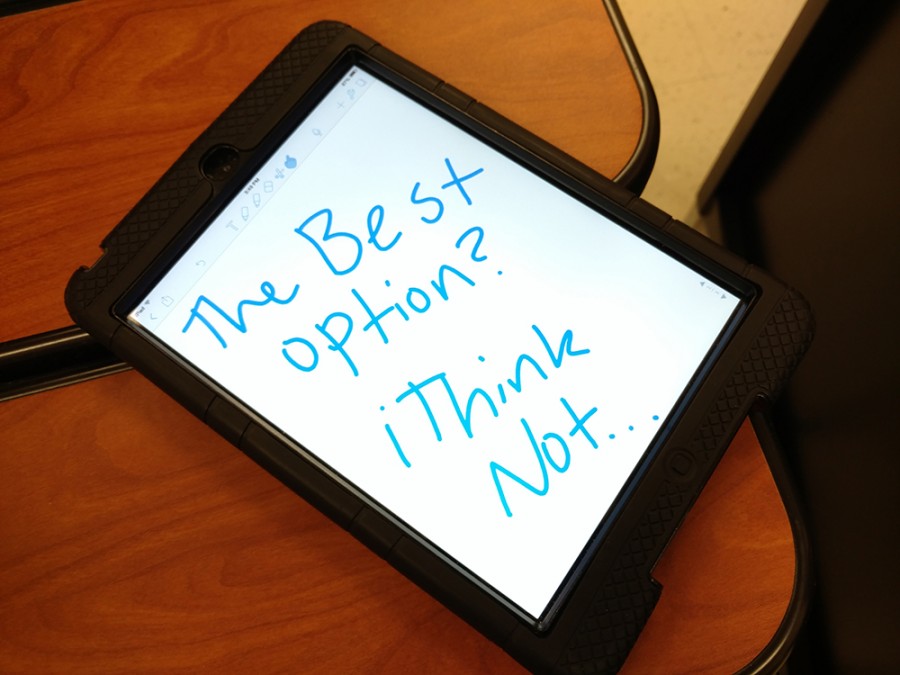One and Done: Are One to One Programs Worth It?
Today, technology is a part of our lives like never before. We wake up to our phone’s alarm, we find our way to new locations with the built-in GPS, and we monitor every step with a Fitbit. Every waking moment technology is occupying our time. With this new surge of connectivity, the next logical step would be to begin phasing out the obsolete technologies, right?
One-to-One computing isn’t a new idea, the first major implementations of computers in schools started in the mid-2000s. The first few school districts to take the plunge got in over their heads, and the lack of funding quickly outdated the programs and affected their effectiveness. Ten years on, and the number of school districts with a One-to-One program has doubled or tripled, but these school districts have realized the problem with technology today: it is obsolete within two or three years. Now, One-to-One districts have reevaluated their initial plans, and the majority have cut funding to go back to more cost-effective and simple methods of teaching.
When Battle opened in 2013, it was designated as the most technologically advanced school in Columbia; and probably in Mid-Missouri. The goal was to be as connected as possible, linking student to teacher and eliminating as much paper as possible. iPad Minis were the answer, or so they thought. These revolutionary new tablets would be the textbooks, notebooks, and worksheets for students, no paper needed.
Now, entering its third year, Battle has hit a wall. The iPads that were meant to be the wonderful tools of change, have become more of a hassle. There are a few reasons for this:
- iPad Minis (generation 1 models we have) were outdated when they were new, and they are even more outdated today. The A5 processor that runs them is slow, drinks battery life, and is outdated. The A5 was even outdated when the iPad Mini 1 was new; Apple was already using the A6 and A7 in the iPhone at the time.
- iPad Minis are flimsy and easy to damage; I cannot recall the number of times friends have damaged their iPads from just a short drop or light impact.
- iPad Minis are just that: mini. They are far too small to do anything with; typing and writing on them is cumbersome and more trouble than it is worth. The fact that they don’t have keyboards makes it even of a hassle.
- Finally, the iPad Mini 1, due to its poor processing power and lack of storage, will be unlikely to ever receive an iOS update past iOS 8 and its subsequent minor updates. They simply do not have enough power or space to keep up-to-date.
That is just the short list of problems that students and teachers alike here at Battle will be facing in the next couple years. Luckily, seniors and juniors will be getting out in just enough time to avoid having to reuse someone else’s beaten up iPad. The constant recycling of the iPads will only add to the drop of power and usefulness over the next two to three years, as constant use will continue to drop the lifespan of each device.
Along with physical misuse of the iPads, virtual misuse of their capabilities has also taken a toll on their effectiveness. During recent years the iPads have become more of a personal device than a learning tool. Students spend more time in class and on YouTube than they do taking notes.
Collin Pounds, a senior, finds the iPads to be more of a problem than a help.
“The iPads are more of a frustration than a tool for education. By now, they [the iPads] that all the seniors have are so out-of-date that the updates just make them even slower,” said Pounds.
If iPads had tangible keyboards and greater processing power, students might be inclined to use them. Without those features, the iPad is basically a brick with internet connection. That paperless future that Columbia Public Schools promised is nothing but a dream now. Most teachers at Battle are still using paper copies for assignments.
On the surface, One-to-One computing programs are a fantastic way to accelerate the learning and teaching of high school students. Unfortunately, like many ideas, One-to-One only works in the ideal world. When actually put into practice, they make little to no difference in how we learn. If anything, iPads and computers have become another distraction to learning; even with all the new restrictions this year. Take a second look CPS, it looks like we could use more textbooks than screens in the future.

